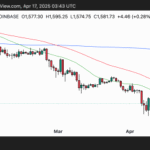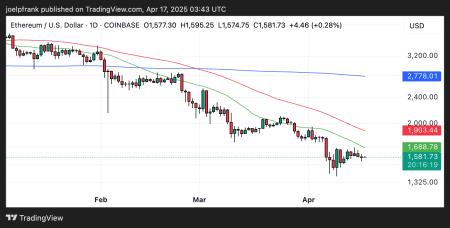Last updated:
 Why Trust Cryptonews
Why Trust Cryptonews

Digital asset investment products experienced a significant surge last week, attracting inflows of $2.2 billion, bringing the total year-to-date inflows to a historic $29.2 billion.
The impressive influx has pushed total assets under management (AuM) to over $100 billion for only the second time ever, reaching $102 billion—similar to levels seen in early June 2024, CoinShares said in a recent report.
Trading volumes surged by 67% week-on-week, climbing to $19.2 billion, which accounts for 35% of the total Bitcoin trading on reputable exchanges.
Bitcoin is the Primary Beneficiary
Bitcoin was the primary beneficiary, absorbing the entire $2.2 billion inflow, while short-Bitcoin products attracted an additional $8.9 million.
In contrast, Ethereum saw only $9.5 million in inflows, with Solana gaining $5.7 million, while other altcoins, like Polkadot and Arbitrum, recorded minor inflows.
The U.S. market led the way with the full $2.2 billion in inflows, while Germany recorded modest inflows of $5.1 million.
Analysts suggest that the excitement surrounding potential Republican electoral victories fueled these inflows, particularly early in the week.
However, as polling shifted, minor outflows were noted on Friday, highlighting Bitcoin’s sensitivity to U.S. election dynamics.
Last Wednesday, October 30, spot Bitcoin ETFs saw an impressive $893.21 million in net inflows, marking the second-highest total on record.
BlackRock’s iShares Bitcoin Trust (IBIT) led the way, recording over $872 million in net inflows—the highest single-day total since its launch in January and a figure that surpasses the previous record set on March 12.
As reported, Bitcoin spot ETFs also saw record inflows of $870 million on October 29.
Could a New Bitcoin All-Time High Be Imminent?
Last week, Bitcoin surged to as high as $73,000, just shy of its all-time high (ATH), sparking speculations that a significant breakout could be on the horizon.
According to CEX.io’s Illya Otychenko, Bitcoin failed to hit a new ATH due to profit-taking from short-term holders.
He said that the consolidation phase, characterized by declining trading volume, suggests that a major price movement may be imminent.
Historically, Bitcoin has shown a pattern of double-digit gains following ATH breakouts, often accompanied by increased volatility.
Current technical indicators, such as the 20-day Exponential Moving Average (EMA) and a recently formed golden cross between the 50-day and 200-day Simple Moving Averages (SMA), hint at bullish momentum, Otychenko wrote.
However, he noted that the daily MACD points towards a potential bearish crossover, indicating that market participants should remain vigilant.
Key upcoming events, including the U.S. elections on November 5 and a Federal Reserve meeting on November 6-7, could introduce volatility and impact Bitcoin’s price.
Notably, inflows into U.S. spot Bitcoin ETFs have surged, suggesting heightened interest that may precede significant market movements.
Despite recent profit-taking by short-term holders, long-term investors seem to retain confidence in Bitcoin’s potential, opting to hold their positions.



















